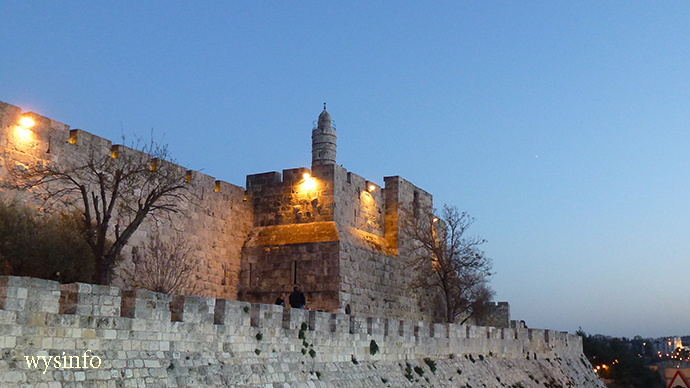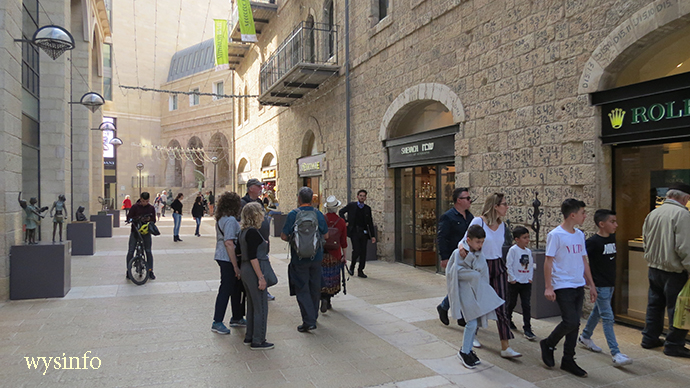A story of a cello is part of the ‘All the World is a Stage’ project. Wysinfo initiated this project in order to encourage international cooperation through culture.
To watch other performances that are part of this project, follow this link
Wysinfo – ‘All the World is a Stage Project’ Front Page.
Kol Dodi Dofek – Music composed by Rabbi Shneur Zalman
Performed by Yosef Lyubashevsky
Text of Shir HaShirim (Song of Songs) Chapter 5 – Kol Dodi Dofek
(English Translation and Hebrew)
Kol Dodi Dofek
I have come to my garden, my sister, [my] bride; Kol Dodi Dofek is from Shir Hasharim – Chapter 5. This song is about a groom and his bride and alludes to an interchange between them. The groom tries to seduce his bride by coaxing her to ‘let him in’, but he does not force his way in. The bride, at first, resists. When the bride realizes that she wants the groom, she goes to the ‘gate’, where he was waiting, to let him in but he has already gone. She cries out to the ‘daughters of Israel’ to help her find her love. Rabbi Shneur Zalman of Liadi (1745 – 1812), also known as the “Alter Rebbe”, was the founder and first Rebbe of the Chabad-Lubavitch movement, a branch of Hasidic Judaism. He composed the music played in the video as a tribute to the ‘Song of Songs – Chapter 5’. Shneur Zalman was born in Liozna, near the town of Lubavitch where he studied as a young boy. At the age of 12 he moved to Vitebsk where they quickly recognized him as a scholar of significance. As a young man, he set out to study with the Rabbi Dovber of Meseritch. There he absorbed the essence of Hassidism – Chochmah, Binah, Da’at ( חכמה, בינה, דעת): “Wisdom, Understanding, and Knowledge”. He promoted the philosophy that man who aspires to completion serves G‑d with mind, heart and deed in unison. Among his accomplishments, Rabbi Shneur Zalman is particularly known for his work on the Code of Jewish Law, where he compiled two hundred years of commentary on the Shulchan Aruch of Rabbi Joseph Caro. In addition to ‘Kol Dodi Dofek’, the Alte Rebbe wrote a number of Chasidic melodies such as ‘Tzomah Lecha Nafshi’, Nigun ‘Daled Bavos’, Nigun ‘Sholosh Tenuos’, Nigun ‘Avinu Malkeinu’ Yosef Lyubashevsky is a cellist who occasionally performs in
the Mamilla Mall corridor that leads to the old city of Jerusalem. Yosef, born in Russia, grew up in a family that
loved music. When he began to study, his parents gave him an antique cello that
he has cherished ever since.
He eventually embraced the Chabad vision of Judaism
and immigrated to the land
of Israel. He lives in a
neighborhood of Jerusalem
and is raising a family in the spirit of the Chabad-Lubuvitz movement.
Yosef’s cello was made in Russia, in around 1860. During the Second World War it was taken to Germany by the Nazis, but later returned to Russia. Yosef’s grandparents bought the cello for Yosef’s older brother who eventually went on to Moscow to study music. While in Moscow his teachers convinced him that he needed a newer cello, so Yosef’s parents gave the original cello to Yosef, who also showed a love of music. Yosef has cherished this cello ever since. Recently he realized that the cello required restoration to ensure that the sound was the best it could produce. Below you can follow the work of the restorer as he brings the cello back to it’s original state: *** After the cello was fully restored we met Yosef once again in Jerusalem and he played two more Chabad melodies for us. Can you hear the difference between before and after the reconstruction? ‘ E-li Ata’ (Thou Art My G-D) is a melody written by Rabbi Sheur Zalman of Liadi (1745-1812). The melody was composed for the powerful words in the book of Psalms chapter 118:28,29. *** Yemin Adonai – ‘ימין ה (Yemin HaShem) is a melody written by Rabbi Menachem Mendel Schneersohn (1789-1866) for a verse from the Book of Psalms, chapter 118:16 starting with ‘Yemin Adonai… – (Yemin HaShem…)’ Rabbi Menachem Mendel Schneersohn was the 3rd spiritual leader of the Chabad movement. He was known for his wisdom and knowledge of the Torah and for the understanding of the apparent and of the hidden meanings in it. The Rabbi, also known as the Tzemach Tzedek, relating to his 7 volume books in this name, of commentary on the Talmud. *** The Mammilla Promenade creates an unusual corridor joining the new city of Jerusalem to the Old City. It is part of a larger neighborhood which covers about 120 dunam just outside the Jaffa Gate. The neighborhood is bordered by the old city walls in the east; King David Street in the west; King Solomon Street in the north and by the French consulate and ‘Yemin Moshe’ neighborhoods to the south. The Mammilla neighborhood was established at the end of the
19th century as a business center for Jews and Arabs. The city of Jerusalem, in around
2010, completed a challenging project to reconstruct the area with an effort to
renew while maintaining the flavor of the old. A good example is shown in the
picture below. An old building was taken apart and then reconstructed with the
original stones based on a careful mapping process. Archeological excavations in the vicinity unearthed
interesting artifacts from the 2nd iron-age period, the Jewish 2nd temple
period, the later Roman period, the Byzantine period, the early Muslim Period,
the Ayyubid period and more. The promenade has become a favorite tourist spot which displays sculptures by local artists and offers cafes, restaurants and shops. Bordering Mammilla one finds various historical sites including King David’s Tower, Mammilla’s Pool, the Sultan’s Pool, the French compound with St. Vincent de Paul Chapel and Notre-Dame hostel, Mount Zion, Mishkenot-Sha-ananim and many more. Related links https://en.wikipedia.org/wiki/Shneur_Zalman_of_Liadi https://Chabad.org/Library – Rabbi Shneur Zalman of Liadi, the “Alter Rebbe”
I have gathered my myrrh with my spice ...
"I have come to my garden, my sister, [my] bride; I have gathered my myrrh with my spice, I have eaten my honeycomb with my honey, I have drunk my wine with my milk.
Eat, friends; drink, yea, drink abundantly, beloved ones."
"I sleep, but my heart is awake. Hark! My beloved is knocking:"
"Open for me, my sister, my beloved, my dove, my perfect one, for my head is full of dew, my locks with the drops of the night."
"I have taken off my tunic; how can I put it on? I have bathed my feet; how can I soil them?"
My beloved stretched forth his hand from the hole, and my insides stirred because of him.
I arose to open for my beloved, and my hands dripped with myrrh, and my fingers with flowing myrrh, upon the handles of the lock.
I opened for my beloved, but my beloved had hidden and was gone; my soul went out when he spoke; I sought him, but found him not; I called him, but he did not answer me.
The watchmen who patrol the city found me; they smote me and wounded me; the watchmen of the walls took my mantle off me.
"I adjure you, O daughters of Jerusalem, if you find my beloved, what will you tell him? That I am lovesick."
"What is your beloved more than another beloved, O fairest of women? What is your beloved more than another beloved, that you have so adjured us?"
"My beloved is fresh and ruddy, surrounded by myriads.
His head is as the finest gold; his locks are curled, [they are as] black as a raven.
His eyes are like doves beside rivulets of water, bathing in milk, fitly set.
His jaws are like a bed of spice, growths of aromatic plants; his lips are [like] roses, dripping with flowing myrrh.
His hands are [like] wheels of gold, set with chrysolite; his abdomen is [as] a block of ivory, overlaid with sapphires.
His legs are [as] pillars of marble, founded upon sockets of fine gold, his appearance is like the Lebanon, chosen as the cedars.
His palate is sweet, and he is altogether desirable; this is my beloved, and this is my friend, O daughters of Jerusalem."
בָּ֣אתִי לְגַנִּי֘ אֲחֹתִ֣י כַלָּה֒ אָרִ֤יתִי מוֹרִי֙ עִם־בְּשָׂמִ֔י אָכַ֤לְתִּי יַעְרִי֙ עִם־דִּבְשִׁ֔י שָׁתִ֥יתִי יֵינִ֖י עִם־חֲלָבִ֑י אִכְל֣וּ רֵעִ֔ים שְׁת֥וּ וְשִׁכְר֖וּ דּוֹדִֽים
אֲנִ֥י יְשֵׁנָ֖ה וְלִבִּ֣י עֵ֑ר ק֣וֹל | דּוֹדִ֣י דוֹפֵ֗ק פִּתְחִי־לִ֞י אֲחֹתִ֤י רַעְיָתִי֙ יֽוֹנָתִ֣י תַמָּתִ֔י שֶׁרֹאשִׁי֙ נִמְלָא־טָ֔ל קְוֻּצּוֹתַ֖י רְסִ֥יסֵי לָֽיְלָה
פָּשַׁ֨טְתִּי֙ אֶת־כֻּתָּנְתִּ֔י אֵיכָ֖כָה אֶלְבָּשֶׁ֑נָּה רָחַ֥צְתִּי אֶת־רַגְלַ֖י אֵיכָ֥כָה אֲטַנְּפֵֽם
דּוֹדִ֗י שָׁלַ֤ח יָדוֹ֙ מִן־הַח֔וֹר וּמֵעַ֖י הָמ֥וּ עָלָֽיו
קַ֥מְתִּֽי אֲנִ֖י לִפְתֹּ֣חַ לְדוֹדִ֑י וְיָדַ֣י נָֽטְפוּ־מ֗וֹר וְאֶצְבְּעֹתַי֙ מ֣וֹר עֹבֵ֔ר עַ֖ל כַּפּ֥וֹת הַמַּנְעֽוּל
פָּתַ֤חְתִּי אֲנִי֙ לְדוֹדִ֔י וְדוֹדִ֖י חָמַ֣ק עָבָ֑ר נַפְשִׁי֙ יָֽצְאָ֣ה בְדַבְּר֔וֹ בִּקַּשְׁתִּ֨יהוּ֙ וְלֹ֣א מְצָאתִ֔יהוּ קְרָאתִ֖יו וְלֹ֥א עָנָֽנִי
מְצָאֻ֧נִי הַשֹּֽׁמְרִ֛ים הַסֹּֽבְבִ֥ים בָּעִ֖יר הִכּ֣וּנִי פְצָע֑וּנִי נָֽשְׂא֤וּ אֶת־רְדִידִי֙ מֵֽעָלַ֔י שֹֽׁמְרֵ֖י הַֽחֹמֽוֹת:
הִשְׁבַּ֥עְתִּי אֶתְכֶ֖ם בְּנ֣וֹת יְרֽוּשָׁלָ֑ ִם אִֽם־תִּמְצְאוּ֙ אֶת־דּוֹדִ֔י מַה־תַּגִּ֣ידוּ ל֔וֹ שֶֽׁחוֹלַ֥ת אַֽהֲבָ֖ה אָֽנִי
מַה־דּוֹדֵ֣ךְ מִדּ֔וֹד הַיָּפָ֖ה בַּנָּשִׁ֑ים מַה־דּוֹדֵ֣ךְ מִדּ֔וֹד שֶׁכָּ֖כָה הִשְׁבַּעְתָּֽנוּ
דּוֹדִ֥י צַח֙ וְאָד֔וֹם דָּג֖וּל מֵֽרְבָבָֽה
רֹאשׁ֖וֹ כֶּ֣תֶם פָּ֑ז קְוֻצּוֹתָיו֙ תַּלְתַּלִּ֔ים שְׁחֹר֖וֹת כָּֽעוֹרֵֽב
עֵינָ֕יו כְּיוֹנִ֖ים עַל־אֲפִ֣יקֵי מָ֑יִם רֹֽחֲצוֹת֙ בֶּֽחָלָ֔ב יֽשְׁב֖וֹת עַל־מִלֵּֽאת
לְחָיָו֙ כַּֽעֲרוּגַ֣ת הַבֹּ֔שֶׂם מִגְדְּל֖וֹת מֶרְקָחִ֑ים שִׂפְתוֹתָיו֙ שֽׁוֹשַׁנִּ֔ים נֹֽטְפ֖וֹת מ֥וֹר עֹבֵֽר
יָדָיו֙ גְּלִילֵ֣י זָהָ֔ב מְמֻלָּאִ֖ים בַּתַּרְשִׁ֑ישׁ מֵעָיו֙ עֶ֣שֶׁת שֵׁ֔ן מְעֻלֶּ֖פֶת סַפִּירִֽים
שׁוֹקָיו֙ עַמּ֣וּדֵי שֵׁ֔שׁ מְיֻסָּדִ֖ים עַל־אַדְנֵי־פָ֑ז מַרְאֵ֨הוּ֙ כַּלְּבָנ֔וֹן בָּח֖וּר כָּֽאֲרָזִֽים
חִכּוֹ֙ מַֽמְתַקִּ֔ים וְכֻלּ֖וֹ מַֽחֲמַדִּ֑ים זֶ֤ה דוֹדִי֙ וְזֶ֣ה רֵעִ֔י בְּנ֖וֹת יְרֽוּשָׁלָֽיִם
About the poem
About the author of the music
About the performer
About the cello
















Three Years Later….
About the psalm that inspired this melody
About the psalm and the melody
“ימין יְ֭הוָה רוֹמֵמָ֑ה יְמִ֥ין יְ֝הוָה עֹ֣שָׂה חָֽיִל”
In the verse G-D is being praised for his mighty actions/deeds in the universe..About the location

